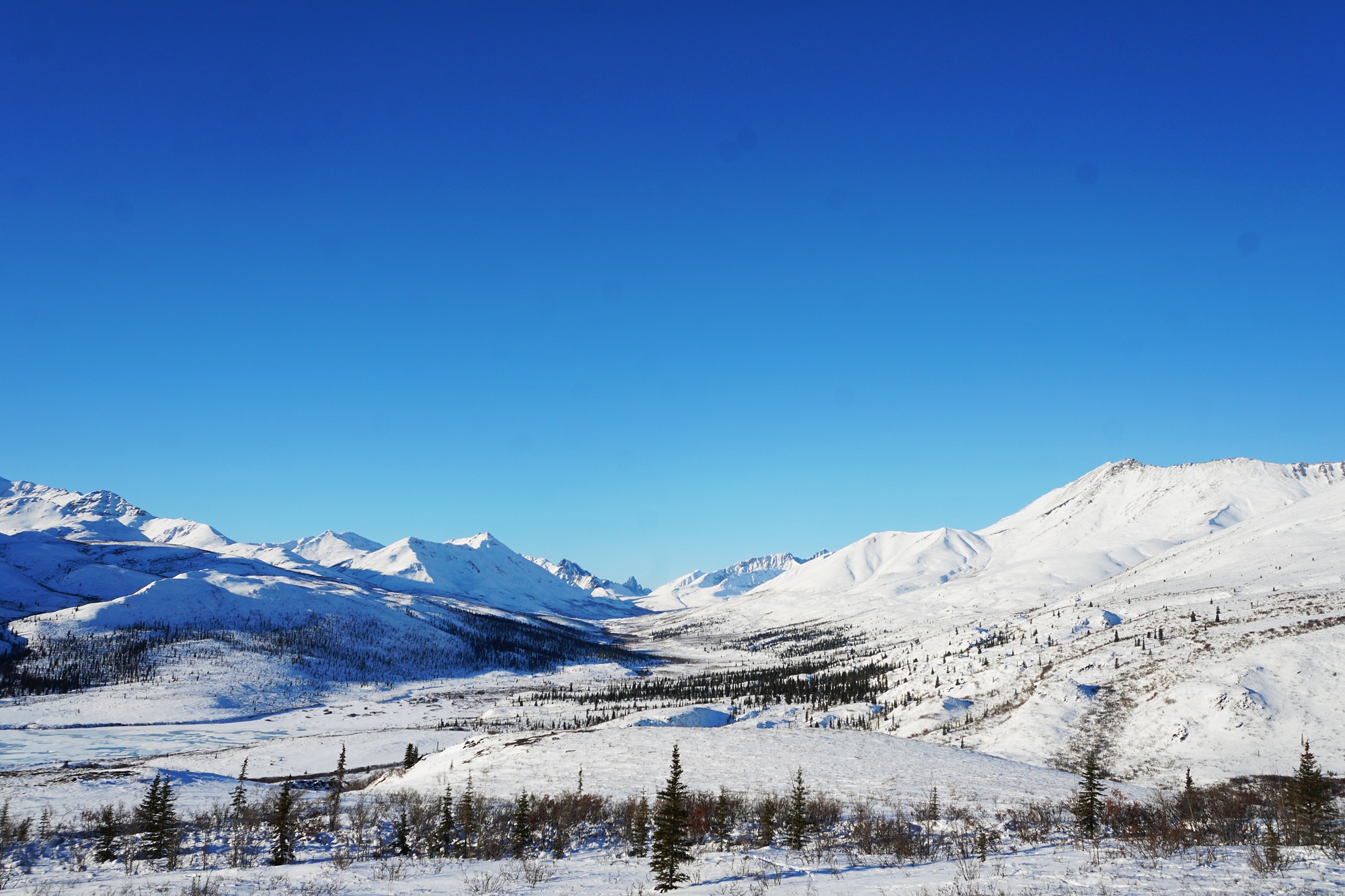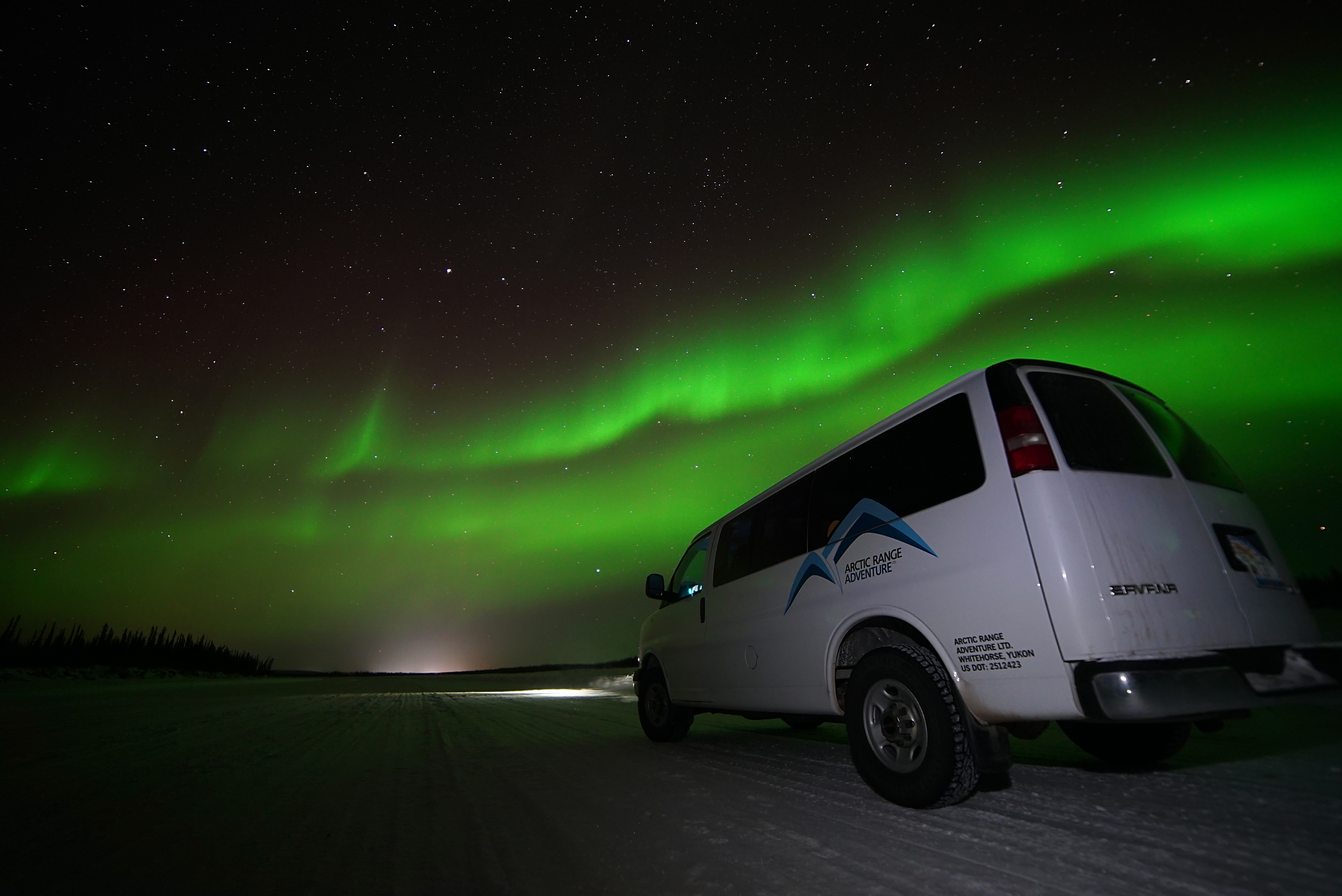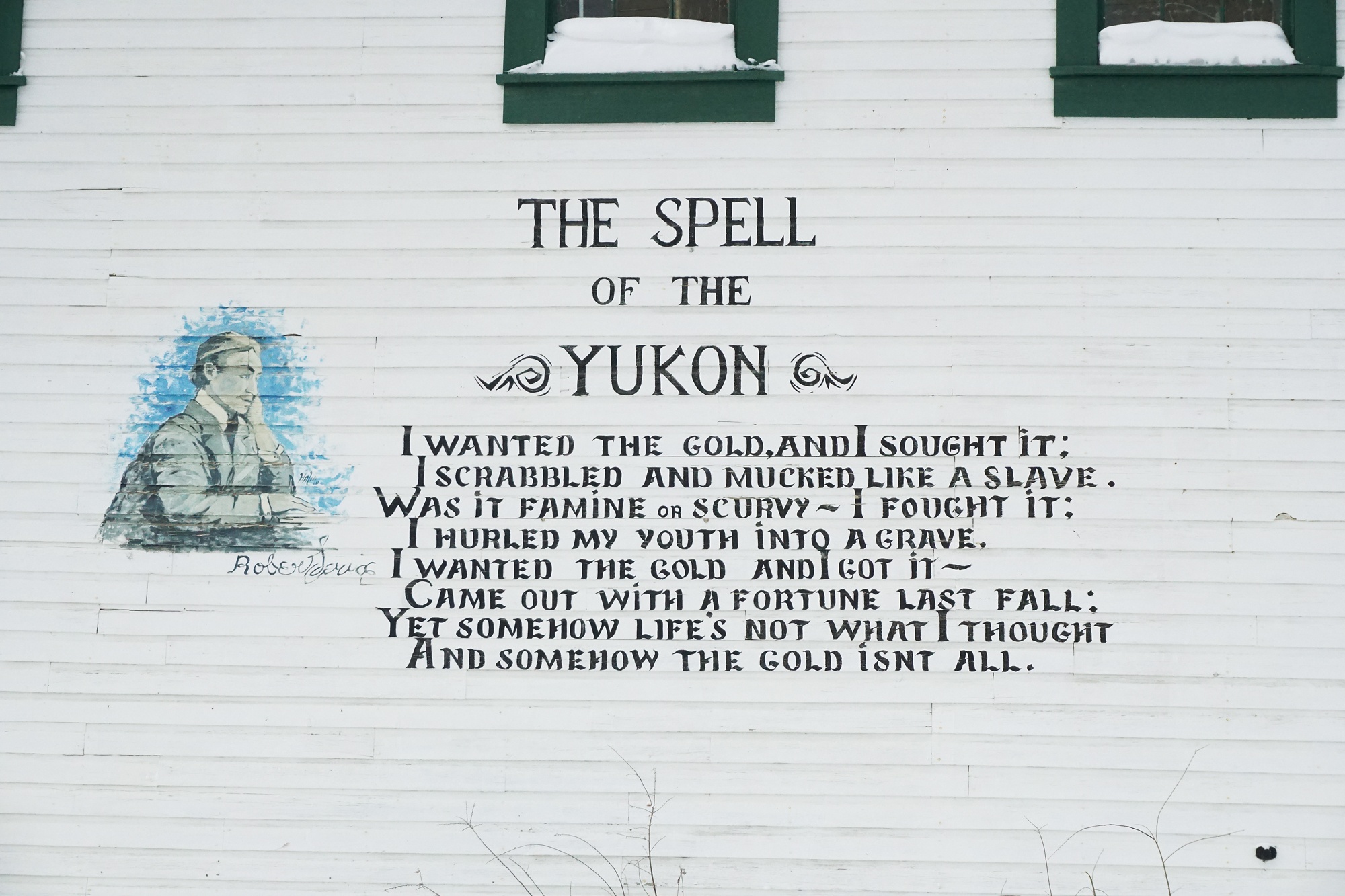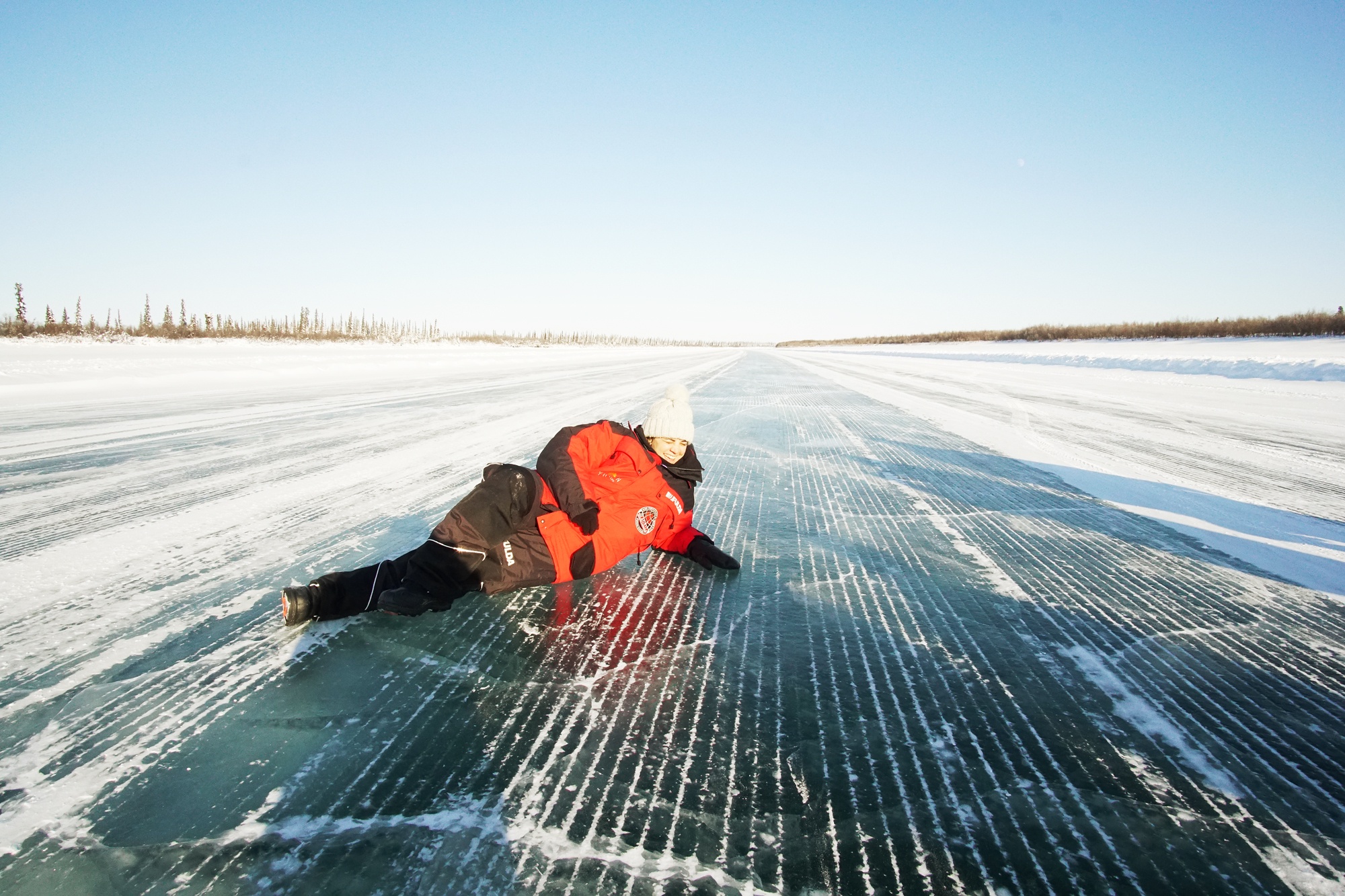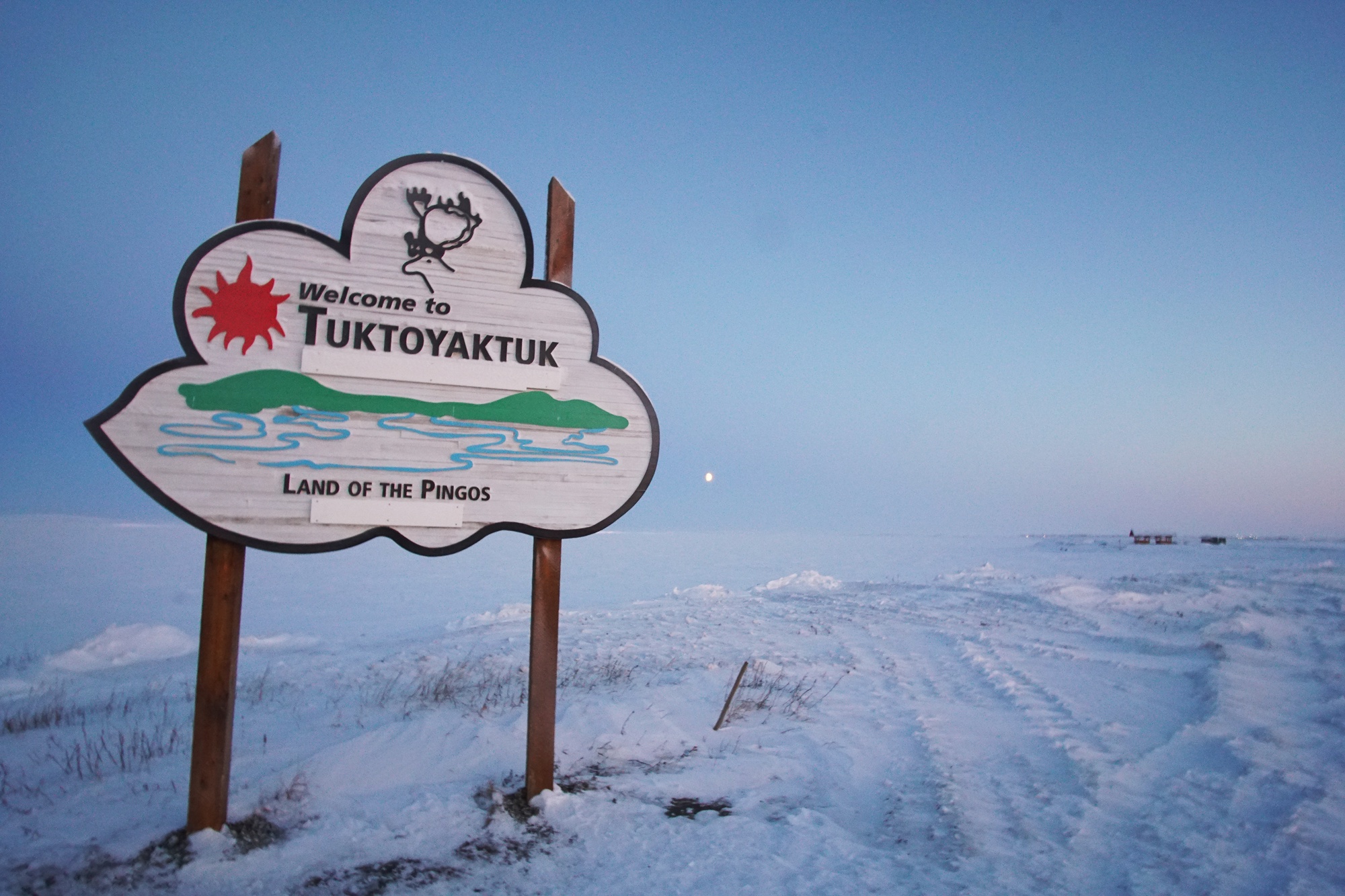Arctic Winter Explorer | Ice Road to the Arctic Sea
Arctic Winter Explorer | Ice Road to the Arctic Sea
$3247
Arctic Winter Explorer | Ice Road to the Arctic Sea
8 Days Starting and ending in Whitehorse, Yukon, Canada
Visiting: Whitehorse, Dawson City, Eagle Plains, Inuvik, Tuktoyaktuk, Aklavik
Tour operator:
Tour code:
AWE
Recommended For:
Guide Type:
Fully Guided
Group size:
5 - 12
Age range:
7-89
Tour operated in:
EnglishTrip Styles:
Interests:
Activities:
Tour Overview
Join us as we travel overland from the Pacific to the Arctic, along snow covered highways and roadways built of ice along ancient wildlife corridors, and traditional trading routes of First Nations traders - later used by Klondike Gold Rush prospectors and NWMP patrolmen. The route offers some of the greatest geographic diversity in the country; the Tombstone Mountains in the central Yukon are among the youngest mountain ranges in North America, while the low rolling Ogilvie’s with their naked spines were not glaciated during the last Ice Age, and thus are among the oldest. North of the Ogilvie Mountains, the landscape gradually flattens to low tundra and just after crossing the Arctic Circle the Richardson Mountains, the Northern-most extension of the Rocky Mountains, come into view. From there, the roadway will begin it’s descent into the impressive Mackenzie River Delta; 12th largest in the world, to arrive at Inuvik, known as the Place of Man. We will travel to the isolated community of Aklavik, once the region’s administrative centre, locals were slated to be moved to Inuvik, but refused – hence their motto, “Never say die.”, on the Arctic coast, accessible only by a winter “ice-road” constructed out of the frozen ice of the Mackenzie River and the Arctic Ocean. Exploring this remote village we will visit the grave of the Mad Trapper, the mysterious backwoods killer who led Mounties on one of Canada’s greatest manhunts. The tour finishes with a exciting excursions to the Inuvialuit village of Tuktoyaktuk, on the Arctic coast, where we learn about the local history and culture.
Highlights
Itinerary
Day 1 : Arrive Whitehorse
Location: Whitehorse
Accommodation: Hotel
Meet and greet and transfer to your downtown hotel. En route, your guide will offer a city highlight tour that includes SS Klondike National Historic Site, the Old Log Church and the Log Cabin Skyscraper. You’ll meet your fellow travellers and your guide will review the itinerary and your equipment at our group meeting this afternoon. The remainder of the afternoon and evening is free to explore the city and do any last minute shopping. Accommodation: Whitehorse
Day 2 : Whitehorse - Dawson
Location: Dawson City
Accommodation: Hotel
Prior to the late 1950’s, the only way to travel to Dawson City in summer was on a majestic paddlewheeler like the SS Klondike. Today, we’ll cover the 550km distance in just a few hours. Our route today takes us through the heart of the Yukon interior more or less along the Yukon River valley. We’ll stop for a coffee in the morning at Braeburn Lodge, famous for its massive cinnamon buns, then continue northbound on the Klondike Highway passing through several small native villages and settlements including, Carmacks, Pelly Crossing and Stewart Crossing. Near Carmacks, the road offers great views of famous Five Finger Rapids and about an hour outside of Dawson, we’ll stop at the Tintina Trench overlook for views of the expansive Yukon interior with the Ogilvie Mountains beyond that we’ll pass through the day after tomorrow. After check-in, we’ll have a bite to eat, and then we’ll keep an eye out for the Northern Lights, which can often be seen right over the town. Accommodation: Dawson
Day 3 : Dawson
Location: Dawson City
Accommodation: Hotel
Home to the world’s greatest Gold Rush, some 50,000 gold seekers arrived here in 1898 making Dawson City the largest town west of Winnipeg and North of Seattle (USA) at that time. The entire community is now a national historic site, and the romance of the Old West can be felt on every corner. Dawson’s unpaved streets and wooden boardwalks are still roamed by miners, hunters and trappers. Parks Canada has restored many of the original buildings including the Palace Grand Theatre, the Commissioner’s Residence and the cabins of Jack London and Robert Service’s cabin, among many others. We’ll travel up Bonanza Creek road to the actual claim where gold was discovered in 1896. Discovery Claim is located near the impressive Dredge #4 National Historic Site and we’ll stop for a photo here as well. In the evening you will have the chance to discover Dawson City’s small but authentic bar scene and you will find many longtime residence who can tell you more tales of the far north. Accommodation: Dawson
Day 4 : Dawson - Eagle Plains
Location: Eagle Plains
Accommodation: Hotel
We’ll get an early start today. The Dempster is one of the truly great Canadian roadways. Completed only in the late 1970’s, the Dempster is still the only fully public road in North America to cross the Arctic Circle. Today’s drive is considered most scenic; Tombstone Territorial Park encompasses the jagged peaks to the West that give the park its name and further along, the Ogilvie Mountains offer superb scenery and stunning vistas. Wildlife is often spotted along the roadsides, so keep a good watch for foxes, the occasional wolf and caribou. As we arrive at Eagle Plains in the late afternoon/early evening, the modest hotel, fuel station, and highway maintenance station – the only civilization for approximately 300km in either direction - feels like an oasis! Accommodation: Eagle Plains
Day 5 : Eagle Plains - Inuvik
Location: Inuvik
Accommodation: Hotel
Departing Eagle Plains, our first stop is at the Arctic Circle crossing, where we’ll enjoy a celebratory glass of champagne to commemorate this special occasion. After crossing a mountain range and two rivers (the Richardson’s and the Mackenzie and Peel Rivers), we’ll visit the First Nations community of Fort MacPherson. The famed Lost Patrol, found after they perished by RNWMP Corporal Dempster - for whom the highway is named - is laid to rest here. A former Hudson Bay trading post, some native elders still wonder the village in Hudson Bay print dresses. Inuvik is a relatively young community with an ancient history. The Canadian government commissioned the building of the town in the 1950’s when it became apparent that the nearby traditional village of Aklavik, was slowly sinking into the delta. Inuvialuit people (Inuit, once referred to pejoratively as Eskimos) were also moved down from various points on the Arctic coast. Appropriately, the name Inuvik means Place of Man in the Inuvialuit language. We’ll take a short tour of the village on the way to hotel and you’ll have time to explore the town on foot in the evening. Accommodation: Inuvik
Day 6 : Inuvik - Tuktoyaktuk
Location: Tuktoyaktuk, Aklavik
Accommodation: Hotel
Today will be memorable; at the rivers entrance into the Arctic Ocean, the road turns northeast and travels along the coastline of Arctic Ocean toward the village of “Tuk” as it is known by residents. Not far from town, you’ll see the first of several ‘Pingos’. These are mountains literally made of ice; heaved-up season after season with the annual freeze and thaw. The tallest is over 100m! We will be met by local guides who will take us on a tour of their unique village. Stops along the way include the historic Lady of Lourdes schooner and some of Tuk’s famous community buildings such as sod houses and churches. You’ll also see the Northern Early Warning site (formerly DEW Line) and even get a chance to dip your toe in the Arctic Ocean! You’ll be invited to a local resident’s home including a "traditional lunch and display of Inuit clothing" for a glimpse at home-life in a northern community. Return to Inuvik in the late afternoon. Accommodation: Inuvik
Day 7 : Inuvik - Aklavik
Location: Inuvik
Accommodation: Hotel
After breakfast, we'll visit the town Aklavik, established on the Peel River in 1918, not far from the foot of the Richardson Mountains, accessible only by a winter “ice-road” constructed out of the frozen ice of the Mackenzie River and the Arctic Ocean. Aklavik is the most westerly community in the NWT, with a population of approximately 735 people. It has always been, and still is, a meeting place and home for both the Gwich’in and the Inuvialuit peoples. Many of the inhabitants still follow the traditional way of life – hunting, fishing and trapping. Aklavik was the trapping, trading and transportation centre for the Mackenzie Delta until the establishment of Inuvik, which was built to take over this function. But many residents of Aklavik refused to relocate and are now proud to call their home “the town that wouldn’t die”. Return to Inuvik in the afternoon. Accommodation: Inuvik
Day 8 : Inuvik - Whitehorse
Location: Whitehorse
Transfer to Inuvik Airport, check in, board southbound aircraft. Tour services end on arrival at Whitehorse Airport. Optional evening in Whitehorse or connecting flights.
What's Included
-
Accommodation
-
Airport Transfers at Destination
-
All Domestic Transportation (including internal flights)
-
Fully Guided
-
Historic First Nation City Tour in Tuktoyaktuk
-
Arctic Circle ceremony
-
Flight Inuvik - Whitehorse
-
Emergency equipment including First Aid kit, satellite tracker
-
City sightseeing tour in Whitehorse, Dawson City and Tuktoyaktuk
-
Traditional Lunch & Display of Inuit Clothing in Tuktoyaktuk
What's Not Included
-
Meals – Full Board
-
Tipping and Gratuities
-
Outdoor winter clothing (rental available)
Check out our Q&As
-
Are flights included in this tour?
The flight from Inuvik to Whitehorse is included
-
What is the fitness level required to do this tour?
This tour program is designed for beginners and requires only a basic fitness level.
-
When are the best months to see the northern lights?
Statistically, springtime (March/April) and autumn (September/October) contain the most "geomagnetically disturbed days" which means more aurora activity...although you're bound to see the lights in October, November, December, January and February if you spend enough time looking up. In Yukon, it's dark enough to see the northern lights from about August-through-April. During May, June & July it's just too bright in to see them in the "Land of the Midnight Sun."
-
Should I wear rental winter gear for every tour?
It is not mandatory, but we recommend it. December to April, the temperature drop to around -20 to -25℃, so our winter gear helps you to enjoy any tour comfortably and safe. We strongly recommend to wear our rental winter gear during snow shoeing, ice fishing, and Aurora Viewing tours.
-
How to photograph the Northern Lights?
For starters set the camera on a tripod, adjust the ISO setting up to 800 or 1600, set the f-stop wide open (lowest number like f2.8) and start bracketing the exposure times. Try 5 seconds, 10 seconds and 20 seconds. If the picture is still black and underexposed then try 30 seconds and keep raising the ISO until something shows up on your LCD monitor.
-
Where is the best place to see aurora? And what time is best?
To see aurora you need clear and dark sky. During very large auroral events, the aurora may be seen throughout the US and Europe, but these events are rare. During an extreme event in 1958, aurora was reported to be seen from Mexico City. During average activity levels, auroral displays will be overhead at high northern or southern latitudes. Places like Whitehorse, Yukon; Yellowknife, NWT; Gillam, Manitoba; the southern tip of Greenland; Reykjavik, Iceland; Tromsø, Norway; and the northern coast of Siberia all offer a good chance to view the aurora overhead. In North Dakota, Michigan, Quebec, and central Scandinavia, you might be able to see aurora on the northern horizon when activity picks up a little. In the southern hemisphere the aurora has to be fairly active before it can be seen from places other than Antarctica. Hobart, Tasmania, and the southern tip of New Zealand have about the same chance of seeing aurora as Vancouver, BC, South Dakota, Michigan, Scotland, or St. Petersburg. Fairly strong auroral activity is required for aurora viewing in those locations. The best time to watch for aurora is around midnight, but aurora occurs throughout the night. There are very few places on Earth where one can see aurora during the day. Since clear sky and darkness are essential to see aurora, the best time is dictated by the weather, and by the sunrise and sunset times. The moon is also very bright, and should be taken into account when deciding on a period to travel for the purpose of auroral observation. You might see aurora from dusk to dawn throughout the night. The chances are higher for the three or four hours around midnight.
-
What time should I arrive to Whitehorse?
If you are planing to join the Aurora Viewing Tour, we recommend to arrive at the Whitehorse Airport before 8pm, then you have enough time to prepare for the tour.
Reviews of this operator
1 Select your preferred date
Friday - Friday
Feb 21, 2025 - Feb 28, 2025Friday - Friday
Mar 14, 2025 - Mar 21, 2025Book with Confidence
-
Low Deposit
Arctic Range Adventure requires a minimum deposit of 25% or the full booking value, whichever is less, with the final balance not due until 60 days before departure.
-
Cancellation Policy
We don't charge a cancellation fee, here is a summary of arctic range adventure charges.
Up to 61 days before tour starts: Forfeit 100% of deposit.
At 60 days before tour starts: Forfeit 40% of booking price.
At 44 days before tour starts: Forfeit 60% of booking price.
At 30 days before tour starts: Forfeit 100% of booking price.
